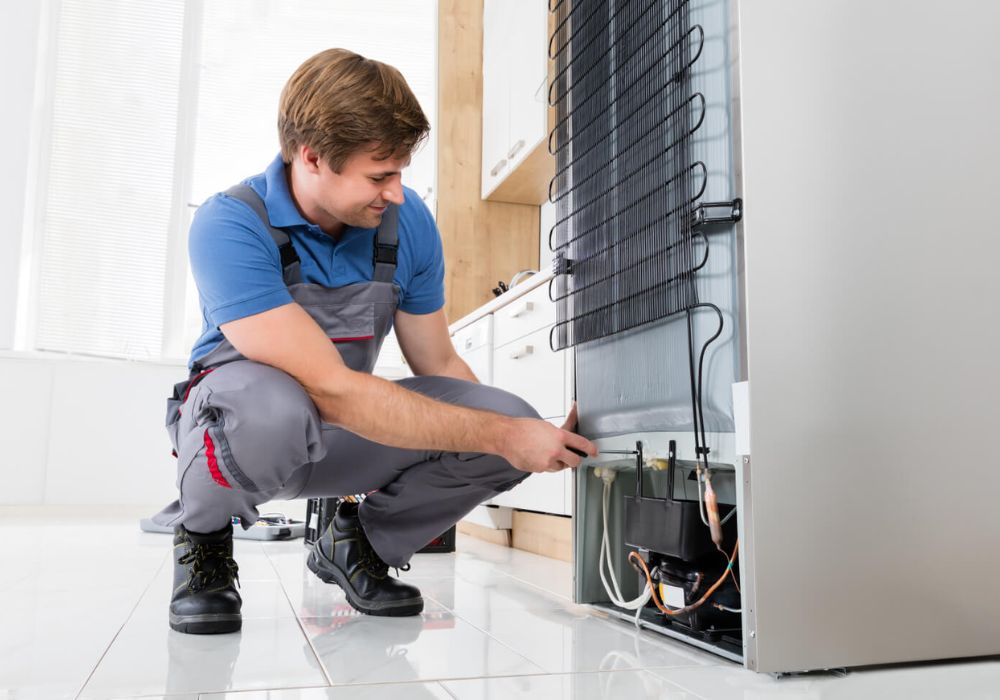Proper ventilation is essential for maintaining a safe and comfortable home environment. One popular ventilation solution is the ridge vent, which allows the exchange of air in and out of the attic space. However, like any component of a roofing system, ridge vents can encounter problems that may compromise their functionality.
In this article, we will explore six common ridge vent problems and provide effective solutions to address each issue, ensuring optimal ventilation and a healthy home for you and your family.
What Is A Ridge Vent?

A ridge vent is an essential component of your roof that helps regulate the temperature and prevent moisture buildup in your attic. When roofers construct your roof, they intentionally create a gap at the top. This gap is covered by a special piece called the ridge vent, which can be made of metal or plastic.
The ridge vent has slots or openings on its sides that extend down to the edges. These slots allow air to flow up through the gap in the roof and exit through the vent. To complete the roof's appearance and protect the ridge vent, a ridge cap is installed over it.
The location of the ridge vent is strategic because hot air naturally rises. As a result, the ridge area is the ideal spot for a vent. As the hot air accumulates in your attic, it rises to the top and escapes through the ridge vent. This means you won't be greeted by a blast of scorching air whenever you enter your attic.
For optimal effectiveness, ridge vents work best in combination with soffit vents. Soffit vents are installed along the soffit, which is the underside of the roof overhang.
They are positioned around the perimeter of your home, just below the roof overhang. Soffit vents allow cool outside air to enter your attic from the bottom, while the ridge vent enables hot air to exit from the top. This coordinated airflow system between the soffit and ridge vents creates excellent ventilation for your attic.
What Are The Benefits Of Having A Ridge Vent On A Roof?
Proper ventilation plays a crucial role in maintaining the overall health of your home. Here are some of the top benefits of having a ridge vent installed on your roof:
Temperature Regulation
A ridge vent helps regulate the temperature in your attic. By allowing hot air to escape and fresh air to enter, it prevents the buildup of excessive heat. This helps in maintaining a more comfortable environment and prevents potential damage to your roofing materials.
Roofing Material Preservation
The longevity of your roofing materials is extended with the presence of a well-functioning ventilation system. Without proper ventilation, the trapped heat and moisture in the attic can accelerate the deterioration of shingles and other roofing components.
A ridge vent helps prolong the life of your roofing materials, saving you from premature replacements and costly repairs.
Mold and Mildew Prevention
Insufficient ventilation can lead to the accumulation of moisture in the attic, creating a breeding ground for mold and mildew. These harmful substances not only pose health hazards for your family but can also cause damage to the structural integrity of your home.
A ridge vent facilitates the removal of excess moisture, reducing the risk of mold and mildew growth.
Improved Home Efficiency
An effective ventilation system enhances the overall efficiency of your home. By removing trapped heat and maintaining a balanced airflow, it helps to reduce the workload on your air conditioning system. This, in turn, can lead to energy savings and lower utility bills.
Winter Protection
In colder climates, ridge vents also play a crucial role in preventing ice dams and icicles. These occur when warm air from the attic melts snow on the roof, which then refreezes at the eaves, causing water backup and potential damage.
Proper ventilation helps to maintain a consistent temperature in the attic, minimizing the risk of ice dams and icicles forming.
6 Common Ridge Vent Problems
- Leaking
- Pest Infestation
- Clogging
- Heat Loss
- Cracking
- Wind Damage
Leaking

Leaking is a common issue that can occur with ridge vents. Despite being designed to be weatherproof, extreme weather conditions, deterioration over time, or improper installation can lead to water infiltration. Regular maintenance and inspections are crucial for preventing leaks.
Ensure that the ridge vent is properly installed, and check it regularly, especially after high winds and storms. In some cases, extreme weather may cause water to blow in through the vent, but a well-installed ridge vent should withstand most conditions. Consider using a high-quality ridge vent designed to withstand strong winds.
Pest Infestation
Ridge vents, if not properly installed or maintained, can become entry points for pests such as bugs, bats, and other unwanted visitors. It is important to choose a ridge vent with critter control measures, such as mesh coverings, and ensure it is correctly installed. Regular inspections will help identify any gaps, damaged mesh, or loose fasteners that may allow pests to enter.
If you have an existing pest issue, consult a professional pest control company to diagnose and address the problem effectively.
Clogging
A clogged ridge vent hampers proper airflow and ventilation. Mold, dust, moss, and wasp nests can accumulate over time, leading to a hot attic, moisture buildup, and potential issues like rot, mold, and mildew.
Regular cleaning and maintenance are crucial to prevent clogging. You can clean the vents yourself using a water hose or seek professional assistance for a thorough cleaning, ensuring unobstructed airflow and optimal ventilation.
Heat Loss
While ridge vents are designed to expel heat from the attic, they can also contribute to heat loss from the living space if not properly insulated. Inadequate insulation between the attic and living space or the absence of soffit vents can result in the escape of interior heat.
To prevent heat loss, ensure proper insulation between the attic and living space. Additionally, install soffit vents that allow fresh air to enter the attic, maintaining a balanced airflow and preventing unnecessary heat loss.
Cracking

Some ridge vents, especially those made of plastic, may develop small cracks over time. These cracks can lead to water leakage and pest infestation.
Opting for a metal ridge vent system instead of plastic can help mitigate the risk of cracking. Metal vents are generally more durable and resistant to wear and tear, ensuring the longevity and effectiveness of your ridge vent.
Wind Damage
High winds can cause significant damage to ridge vents, particularly if they are not securely fastened. It is crucial to ensure proper installation, especially in areas prone to strong winds.
Use longer nails or appropriate fasteners to secure the ridge cap and vent firmly. Promptly address any wind damage to prevent further problems and potential roof leaks.
FAQs about Ridge Vent Problems
How do I know if my ridge vent is leaking?
Signs of a leaking ridge vent include water stains or moisture in the attic, visible water dripping or seeping through the vent, or water damage on the ceiling below the vent. Regular inspections and prompt action can help identify and address leaks in the ridge vent.
What should I do if I find pests in my ridge vent?
If you discover pests in your ridge vent, such as insects, birds, or rodents, it's essential to address the issue promptly. Contact a professional pest control company to assess the situation and safely remove the pests. They can also provide recommendations to prevent future infestations.
How often should I clean my ridge vent to prevent clogging?
Cleaning frequency depends on various factors like the surrounding environment and the presence of trees or nearby sources of debris. As a general guideline, inspect and clean your ridge vent at least once a year. However, if you notice signs of clogging, such as reduced airflow or visible blockages, clean the vent more frequently.
Can a ridge vent cause heat loss during colder months?
While ridge vents are designed to expel hot air from the attic, inadequate insulation or the absence of soffit vents can contribute to heat loss. To prevent this, ensure proper insulation between the attic and living space and install soffit vents. This helps maintain a balanced airflow and prevents unnecessary heat loss during colder months.
How can I prevent cracking in my ridge vent?
To minimize the risk of cracking, consider using a metal ridge vent system instead of plastic. Metal vents are generally more durable and resistant to cracking. Proper installation and regular inspections can also help identify any signs of cracking early on, allowing for timely repairs or replacements.
Can high winds damage my ridge vent?
Yes, high winds can potentially damage a ridge vent if it's not properly installed or secured. To protect your ridge vent from wind damage, ensure it is securely fastened using appropriate nails or fasteners. Consider consulting a professional roofer to ensure proper installation, especially in areas prone to strong winds.





